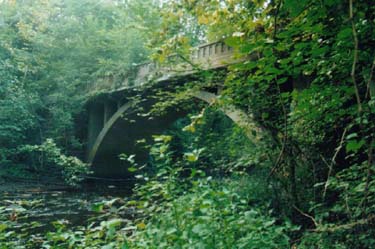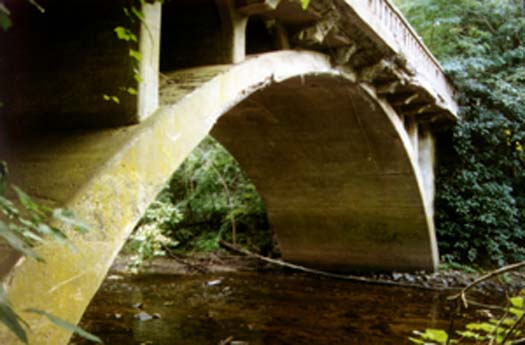 Berlin Street Bridge (Arrawanna Bridge)
Berlin Street Bridge (Arrawanna Bridge) Berlin Street Bridge (Arrawanna Bridge)
Berlin Street Bridge (Arrawanna Bridge)The Berlin Street Bridge is relatively small for this type of construction, just one 55'-long span, with a width of 23'. Instead of two parallel ribs with cross-ties, it has a single arch barrel supporting the cantilevered roadway and transverse support walls rather than columns atop the arch. The openings between support walls have a round-arched shape, repeated in the recessed panels of the parapets that serve as railings. The arch has a rise of 19'. 
The Berlin Street Bridge is Connecticut's oldest example of open-spandrel concrete arch construction. Built in 1918, it served as a sort of small-scale prototype for the State Highway Department. After constructing the bridge and seeing that this type of structure successfully served its purpose, Department engineers went on to use the open-spandrel design for much larger projects in the 1920s and 1930s.
The bridge replaced a narrow iron truss that formerly served the crossing; the stone abutments of the earlier bridge were re-used. The project was paid for as part of the Trunk Line Bridges - Miscellaneous account, with additional assistance from the town of Middletown. It was called the Arrawanna Bridge because the Coginchaug River was also called the Arrawanna River at that time (another name was West River). The bridge was bypassed in 1974 by Route 72 and is no longer in use.
Take a look at the original Connecticut Highway Department drawing for this bridge.
 Return to Main Page
Return to Main Page